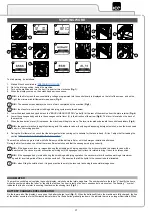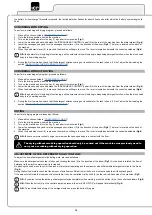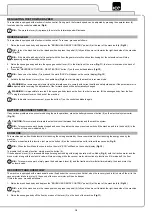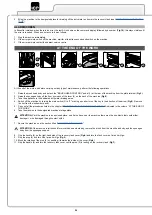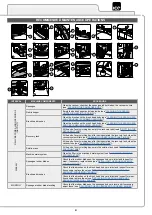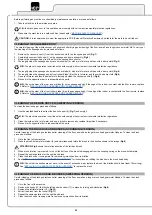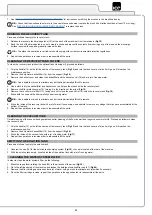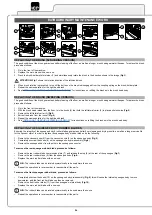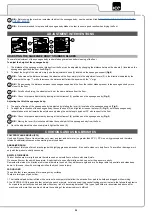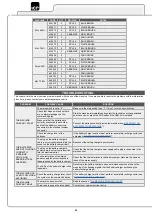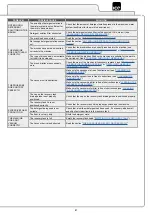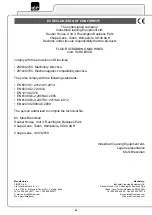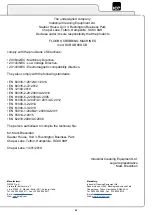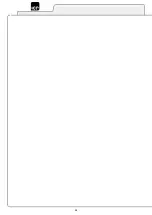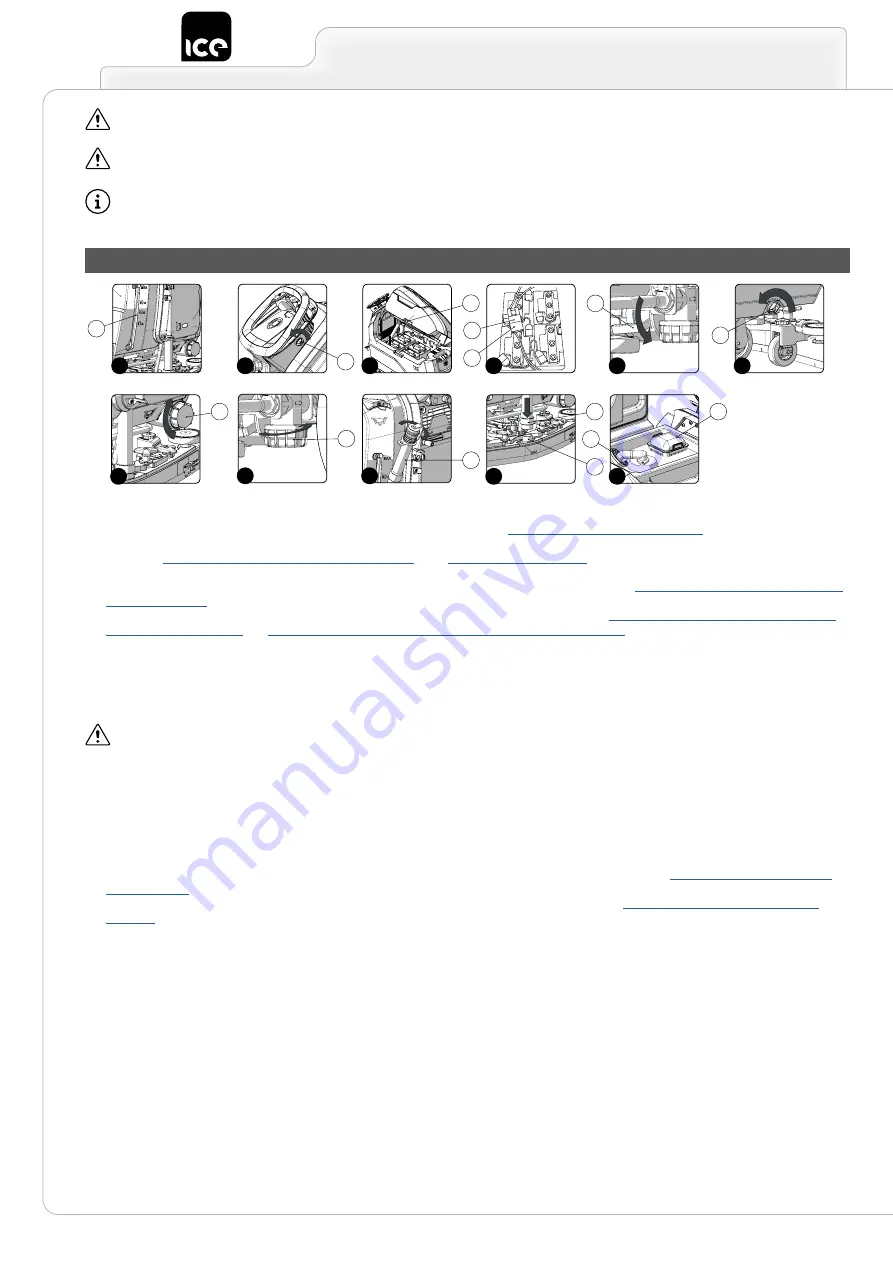
ATTENTION:
Acid or alkaline maintenance detergent tank be used with pH values between 4 and 10 and that do not contain: oxidising
agents, chlorine or bromine, formaldehyde, mineral solvents. The detergents used must be suitable for use with scrubbing machines.
CAUTION:
always use low-foam detergent. To avoid the production of foam, put a minimum quantity of anti-foam liquid in the recovery
tank before starting to clean. Do not use pure acids.
N.B.:
to make it easier to measure the detergent on the cap/measuring device, there are notches indicating the detergent percentage
quantities that can be used. The notches range from a minimum of 0.1% to a maximum of 0.5%.
Before beginning to work, it is necessary to:
1. Make sure the recovery tank is empty. If this is not the case, empty it (read “
2.
Check that the amount of detergent solution in the solution tank is sufficient for the type of work to be performed. If it isn't, top up the solution
FILLING THE SOLUTION TANK WITH WATER
”). Check the level tube (1) in the rear left-hand
part of the machine (
Fig.1
).
3. Check the rubber squeegee blades are in good working condition. If they aren't, replace them (see “
”).
4.
REPLACING THE BRUSH HEAD BRUSH
REPLACING THE BRUSH HEAD BRUSH (SWEEPING VERSION)
”).
5.
Check that the machine is off; if this is not the case, turn the key (2) a quarter turn anti-clockwise (
Fig.2
) . Remove the key from the
instrument panel.
6. Grip the handle (3) on the right-hand side of the recovery tank (
Fig.3
) and turn the tank as far as it will go, until it reaches the maintenance
position.
7. Connect the main system connector (4) to the battery connector (5) (
Fig.4
).
ATTENTION:
This process must be carried out by qualified personnel.
8. Grip the handle (3) on the right-hand side of the recovery tank and turn the tank until it reaches the work position.
9. Make sure the electronic brake is engaged. If it isn't, turn the lever (6) in the direction of the arrow. The traction gearmotor is located on the
rear right-hand side of the machine (
Fig.5
).
10.
Check the water tap is fully open - the water adjustment knob (7) must be turned fully in the direction shown by the arrow (
Fig.6
).
11. Make sure the solution tank drainage cap (8) is closed. If it isn't, close it (
Fig.7
).
12.
Make sure the water filter cap (9) is closed. If it isn't, close it (
Fig.8
).
13. Make sure the cap of the recovery tank drainage tube (10) is closed. If it isn't, close it (
Fig.9
).
14. Make sure the vacuum tube (11) is correctly connected to the sleeve (12) in the squeegee body. If it isn't, connect it (
Fig.10
).
15.
Make sure the vacuum motor filter (13) is correctly connected and is clean (
Fig.11
). If it isn't, clean it (see “
”).
16.
Make sure the filter basin (14) is correctly connected and is clean (
Fig.11
). If it isn't, clean it (see “
PREPARING TO WORK
16
1
1
2
2
3
3
4
4
5
9
5
6
6
7
10
8
7
9
8
10
11
12
13
11
14
















